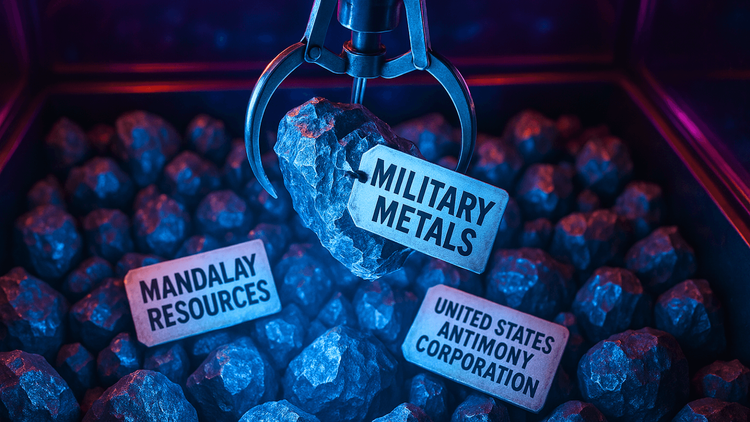Nuclear Power Integral to Microsoft’s Clean Energy Vision, Says Director Todd Noe
Microsoft positions nuclear energy as a key component in achieving its decarbonisation goals, with small modular reactors and firm power complementing renewables for clean energy.

Microsoft, a global leader in technology, is pushing the envelope in clean energy innovation, advocating for nuclear energy alongside renewables to meet its decarbonisation goals. In a panel discussion at the World Nuclear Symposium 2024, Todd Noe, Microsoft's Director of Nuclear and Energy Innovation, elaborated on the company’s strategic roadmap to integrate nuclear energy as part of its sustainable energy solutions. While Microsoft has no intention of investing directly in nuclear power plants, its commitment to policies and collaborations positions nuclear energy as a key player in reducing carbon emissions across industries.
The Role of Nuclear in Microsoft’s Energy Goals
Microsoft has long been a proponent of renewable energy sources like wind and solar. However, the company’s clean energy policy now recognizes nuclear energy as a viable solution for addressing the global challenge of decarbonisation. Todd Noe emphasized that Microsoft is "one of the largest consumers of renewable electricity," but the company also acknowledges the limitations of renewables in providing consistent, reliable power.
Unlike renewables, which are dependent on weather conditions, nuclear energy provides what Noe refers to as "firm power." This is crucial for industries like technology, where data centers require constant, uninterrupted electricity. "At the end of the day, you have to have our data centres running," Noe explained. While renewables are vital, they alone cannot guarantee the stable power supply that industries like Microsoft rely on to power their operations.
Though Microsoft has no immediate plans to build or operate its own nuclear power plants, the company is committed to advocating for policies that accelerate the deployment of nuclear energy. By working with utilities, policymakers, and manufacturers, Microsoft aims to play a significant role in driving nuclear innovation and its integration into the energy mix.
The Intersection of AI and Nuclear Innovation
Microsoft is leveraging its AI expertise to help speed up the regulatory and development processes surrounding nuclear power. Noe highlighted the importance of AI in areas like licensing, stating that the company is "very active" in collaborating with industry players to integrate AI technologies that can streamline nuclear energy's deployment. This fusion of nuclear energy and AI presents a future where regulatory bottlenecks can be addressed more efficiently, making nuclear power more accessible and scalable.
Microsoft’s strategy isn’t limited to internal innovation. The company has forged partnerships across sectors, including collaborations with utility companies and technology firms, to explore new ways of implementing advanced nuclear technologies. These partnerships are critical in developing financial models that support the growth of nuclear projects, particularly small modular reactors (SMRs), which Noe pointed out as an exciting development in the energy sector.
Small Modular Reactors: A Game-Changer for Nuclear Energy
Small modular reactors are gaining traction as a cost-effective, scalable solution to the challenges facing traditional nuclear power plants. These reactors are smaller, cheaper, and quicker to build, making them an attractive option for industries looking to decarbonise their operations without the massive capital expenditure associated with larger nuclear plants. Noe sees SMRs as a crucial part of the future energy landscape, especially as financial models for their deployment are already being developed.
One of the key barriers to nuclear expansion has been the high upfront cost of building nuclear plants. However, Noe noted that private equities are showing increased interest in funding SMR projects, given their lower construction costs, which are projected to be less than USD 5 billion—comparable to large gas or oil exploration ventures. This shift in financial backing is essential for the broader adoption of nuclear energy as part of a sustainable, low-carbon future.
Microsoft’s Collaborative Approach to Nuclear Integration
Microsoft has not been alone in its pursuit of clean energy innovations. Earlier this year, the company partnered with North American steel manufacturer Nucor Corporation and tech giant Google to explore new business models across the electricity ecosystem. This collaboration, which includes nuclear energy, represents a broader push by major corporations to aggregate their demand for clean energy technologies and drive the development of nuclear as a practical solution.
In 2023, Microsoft also signed an energy matching agreement with Constellation Energy Corp. This agreement harnesses the environmental benefits of Constellation’s nuclear power generation to reduce the carbon footprint of a Microsoft data centre in Virginia. This is a critical move in Microsoft’s broader strategy to decarbonise its operations, utilizing nuclear energy to complement its renewable energy initiatives.
Overcoming Challenges in Nuclear Deployment
While nuclear energy offers enormous potential, it also presents unique challenges, particularly in terms of infrastructure and transmission. Noe acknowledged that the existing transmission systems in countries like the USA need significant upgrades to support new nuclear developments. Co-locating nuclear plants with end-users, such as data centres, may help mitigate some of these issues by reducing the reliance on long-distance power transmission.
Despite concerns about transmission and regulatory challenges, Noe expressed optimism that the USA has not "missed the boat" on nuclear energy. He highlighted the importance of working with utilities and policymakers to create frameworks that support nuclear energy’s growth, especially in regions where the technology is already accepted as part of the energy mix.
Decarbonisation and Firm Power: A Symbiotic Relationship
For companies like Microsoft, which operate extensive global networks of data centres, the need for firm power is non-negotiable. Decarbonisation efforts must be balanced with the requirement for reliable electricity, which is why nuclear energy’s ability to provide constant power makes it an attractive option for the tech industry.
While renewable energy is an essential part of Microsoft's strategy, the company recognizes that it must be complemented by other low-carbon energy sources. Nuclear power, with its ability to generate firm power, provides the necessary balance to ensure that decarbonisation goals can be met without compromising reliability.
Conclusion: Nuclear as a Key Pillar in Microsoft’s Clean Energy Future
Microsoft’s push for nuclear energy highlights the tech giant’s forward-thinking approach to clean energy. By advocating for policies that support nuclear deployment, collaborating with industry partners, and leveraging AI to accelerate development, Microsoft is positioning nuclear energy as a key component of its decarbonisation strategy. While the company may not be building nuclear plants, its influence is helping to shape the future of clean energy, where nuclear power will play an increasingly important role alongside renewables.






